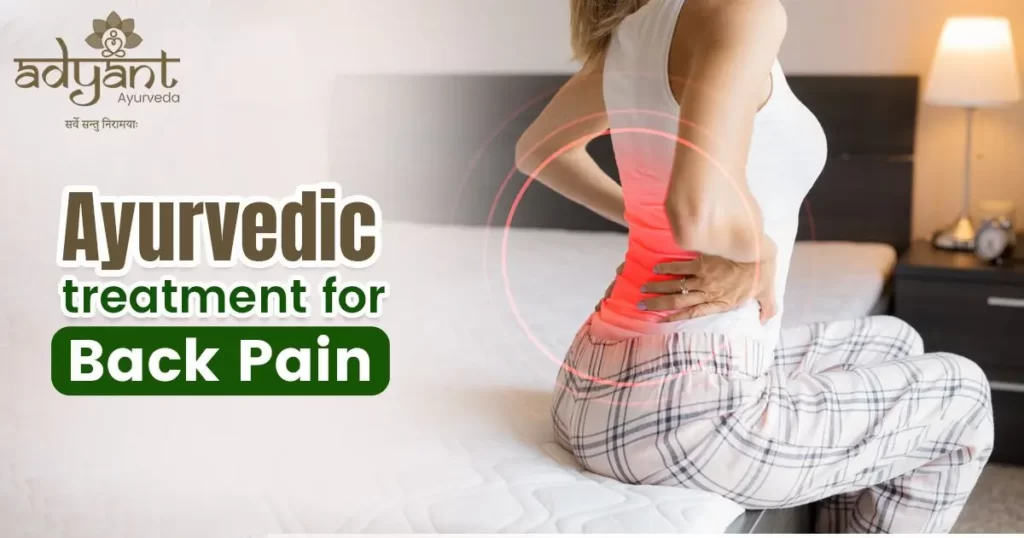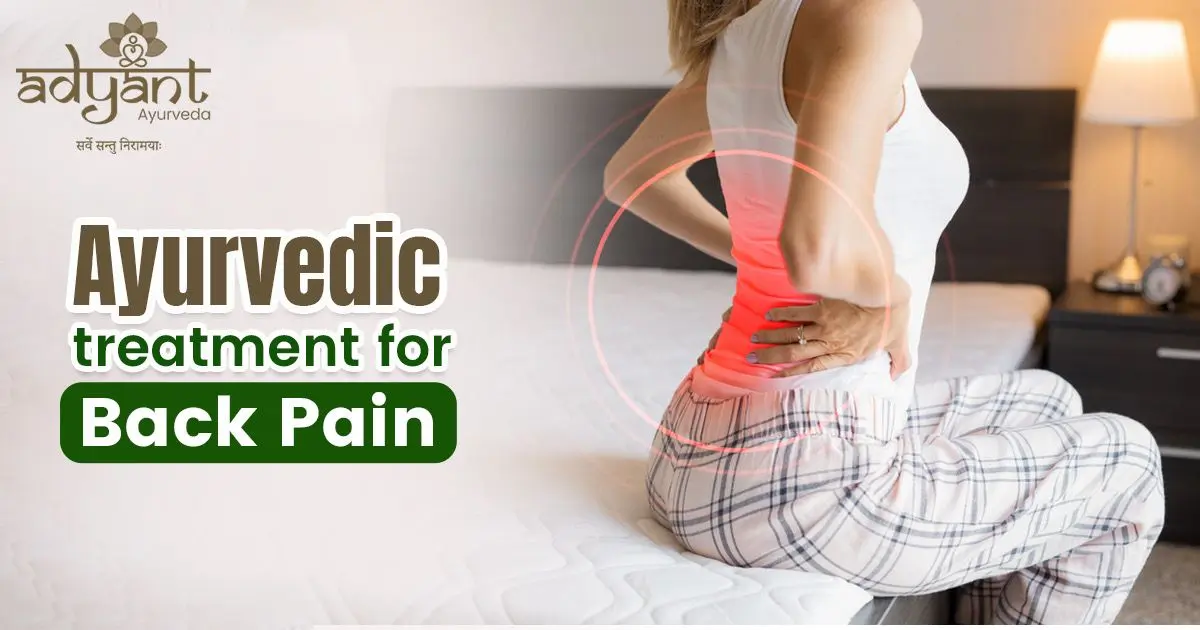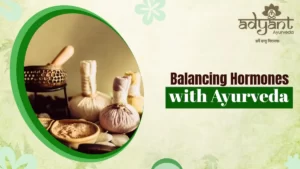
Back pain is a pervasive issue affecting millions worldwide, with over 80% of adults experiencing it at some point in their lives. While conventional treatments offer temporary relief, Ayurveda provides a holistic approach that addresses the root cause of back pain. This article explores the comprehensive Ayurvedic perspective on back pain treatment, combining ancient wisdom with modern understanding.
For Free Consultation With Our Top Ayurvedic Doctors, Download Our App from Play Store “AyurCare“
Understanding Back Pain in Ayurveda
In Ayurveda, back pain is known as “Katisoola” or “Prishthasoola.” According to Ayurvedic principles, back pain is primarily associated with an imbalance in Vata dosha, one of the three fundamental energies governing bodily functions.
The Role of Doshas in Back Pain
- Vata Dosha: Governs movement and is most commonly implicated in back pain. Excess Vata can lead to dryness, stiffness, and pain in the back.
- Pitta Dosha: When imbalanced, can cause inflammation and sharp, burning back pain.
- Kapha Dosha: Imbalance may result in dull, heavy pain and stiffness in the back.
Read Also: Ayurveda Doshas: The Complete Guide
Dhatus (Tissues) Involved in Back Pain
Ayurveda recognizes that back pain often involves imbalances in:
- Mamsa (muscle tissue)
- Asthi (bone tissue)
- Majja (bone marrow and nervous tissue)
Ayurvedic Diagnosis of Back Pain
Ayurvedic practitioners use a comprehensive diagnostic approach called “Trividha Pariksha” to understand the nature of back pain:
- Darshana (Observation): Visual examination of the patient’s posture, gait, and overall appearance.
- Sparshana (Palpation): Touching the affected area to assess temperature, texture, and tenderness.
- Prashna (Questioning): Detailed inquiry about the pain’s nature, onset, aggravating and relieving factors, and associated symptoms.
This holistic assessment helps determine the specific dosha imbalance and guides the treatment plan.
Ayurvedic Treatments for Back Pain: Detailed Explanations
Ayurveda offers a range of treatments tailored to the individual’s constitution (prakriti) and the nature of their back pain. These treatments aim to balance the doshas, particularly Vata, which is often implicated in back pain. Here’s a detailed look at each treatment:
1. Abhyanga (Therapeutic Oil Massage)
Abhyanga is a full-body or localized oil massage that plays a crucial role in Ayurvedic back pain treatment.
Process:
- Warm, medicated oils are selected based on the individual’s dosha imbalance.
- The massage is performed using specific strokes and pressure points.
- For back pain, special attention is given to the spine, lower back, and surrounding muscles.
Benefits:
- Improves blood circulation to the affected area
- Reduces muscle tension and stiffness
- Nourishes the tissues (dhatus) involved in back health
- Helps in the elimination of toxins (ama)
- Balances Vata dosha, reducing pain and inflammation
Duration and Frequency:
- Typically lasts 30-60 minutes
- Frequency depends on the severity of the condition, often recommended daily for acute cases
2. Swedana (Herbal Steam Therapy)
Swedana is a sudation or sweating therapy that often follows Abhyanga in the treatment protocol.
Types of Swedana for Back Pain:
- Nadi Sweda: Localized steam treatment using a pipe to direct steam to the affected area.
- Pindi Sweda: Application of warm, herb-infused boluses to the back.
- Avagaha Sweda: Sitting in a tub of warm, herb-infused water.
Process:
- The patient is exposed to steam generated from water infused with herbs like eucalyptus, nirgundi, or dashamoola.
- The steam is applied to the entire body or locally to the back area.
Benefits:
- Dilates blood vessels, improving circulation
- Relaxes tense muscles and reduces stiffness
- Promotes the elimination of toxins through sweat
- Prepares the body for further treatments like Basti
Duration and Precautions:
- Sessions typically last 15-20 minutes
- Not recommended for pregnant women, those with high blood pressure, or heart conditions
3. Kati Basti
Kati Basti is a unique and highly effective treatment specifically designed for lower back pain.
Process:
- A dough boundary is created on the lower back, typically using black gram flour.
- Warm, medicated oil is poured into this dough ‘well’ and retained for a specified time.
- The oil may be replaced several times during the treatment to maintain warmth.
Oils Used:
- Commonly used oils include Mahanarayana Taila, Dhanwantharam Taila, or Ksheerabala Taila.
Benefits:
- Provides deep nourishment to the lumbar spine area
- Reduces inflammation and muscle spasms
- Improves flexibility and range of motion in the lower back
- Particularly effective for degenerative conditions like lumbar spondylosis
Duration and Frequency:
- Each session lasts 30-45 minutes
- Typically performed for 7-14 consecutive days, depending on the condition
4. Pinda Sweda (Bolus Bag Massage)
Pinda Sweda involves massaging the body with warm, herb-filled boluses or pouches.
Preparation:
- Boluses are prepared with herbs like ashwagandha, bala, methi (fenugreek), and others, chosen based on the patient’s condition.
- These herbs are tied in muslin cloth to form poultices.
Process:
- The boluses are dipped in warm, medicated oil and used to massage the back and affected areas.
- Pressure and circular motions are applied to key points along the spine and surrounding muscles.
Benefits:
- Reduces inflammation and swelling
- Alleviates pain and stiffness
- Improves blood circulation and lymphatic drainage
- Nourishes the tissues with the medicinal properties of the herbs
Duration and Variations:
- Sessions typically last 45-60 minutes
- Variations include Shashtika Shali Pinda Sweda (using medicinal rice) and Valuka Sweda (using sand)
5. Basti (Medicated Enema Therapy)
Basti is considered one of the most important treatments in Ayurveda, particularly for Vata-related disorders like back pain.
Types of Basti for Back Pain:
- Anuvasana Basti: Oil-based enema
- Niruha Basti: Decoction-based enema
Process:
- Medicated oils or herbal decoctions are introduced into the colon through the rectum.
- The medication is retained for a specified time before being expelled.
Herbs and Oils Used:
- Common ingredients include Dashamoola (ten roots) decoction, Erandamooladi Kashayam, and medicated oils like Sahacharadi Taila.
Benefits:
- Balances Vata dosha throughout the body
- Nourishes the nervous system
- Eliminates toxins from the colon
- Reduces inflammation and pain in the lower back and sciatic region
Duration and Course:
- Each session lasts about 30 minutes
- A typical course might include 8-30 sessions, depending on the condition and treatment plan
Precautions:
- Should be performed only by trained Ayurvedic practitioners
- Not recommended for patients with bleeding disorders, ulcerative colitis, or during menstruation
Herbal Remedies for Back Pain in Ayurveda
Ayurvedic herbs play a crucial role in managing back pain. These herbs are often used in combination with other Ayurvedic treatments to provide comprehensive relief. Here’s a detailed look at some key herbs used in Ayurvedic treatment for back pain:
1. Ashwagandha (Withania Somnifera)
Properties:
- Adaptogenic (helps body manage stress)
- Anti-inflammatory
- Analgesic (pain-relieving)
- Nervine tonic (supports nervous system health)
How it Helps with Back Pain:
- Reduces stress-induced muscle tension in the back
- Decreases inflammation in muscles and joints
- Enhances overall pain tolerance
- Supports muscle strength and recovery
Usage:
- Powder: 3-6 grams daily, mixed with warm milk or water
- Capsules: 300-500 mg, twice daily
- Ashwagandha oil: Used for external application during massage
Research:
A 2016 study published in the Journal of Ayurveda and Integrative Medicine found that Ashwagandha root extract significantly reduced pain and stiffness in patients with knee joint pain, suggesting potential benefits for other types of musculoskeletal pain, including back pain.
2. Guggulu (Commiphora mukul)
Properties:
- Anti-inflammatory
- Analgesic
- Antioxidant
- Supports healthy circulation
How it Helps with Back Pain:
- Reduces inflammation in joints and tissues
- Improves blood circulation to affected areas
- Supports the removal of toxins (ama) from tissues
- Helps in maintaining healthy joint function
Usage:
- Tablets: 500 mg, twice daily after meals
- Guggulu-based formulations: Yogaraj Guggulu or Mahayograj Guggulu, as prescribed by an Ayurvedic practitioner
Research:
A study published in the Indian Journal of Pharmacology (2018) demonstrated that Guggulu extract significantly reduced inflammation and pain in animal models, supporting its traditional use in pain management.
3. Rasna (Pluchea lanceolata)
Properties:
- Potent anti-inflammatory
- Analgesic
- Antioxidant
- Supports healthy nerve function
How it Helps with Back Pain:
- Reduces inflammation in muscles and joints
- Alleviates pain, particularly in Vata-type back pain
- Supports overall joint health
- Helps in improving flexibility and movement
Usage:
- Powder: 3-6 grams daily, mixed with warm water
- Often used in combination with other herbs in formulations like Rasnadi Kashayam or Rasnadi Guggulu
Traditional Use:
Rasna is a key ingredient in many Ayurvedic formulations for joint and muscle pain. It’s particularly valued for its ability to balance Vata dosha, which is often implicated in back pain.
4. Shallaki (Boswellia serrata)
Properties:
- Potent anti-inflammatory
- Analgesic
- Supports cartilage health
- Improves blood flow
How it Helps with Back Pain:
- Reduces inflammation in joints and surrounding tissues
- Alleviates pain, particularly in inflammatory back conditions
- Supports the maintenance of healthy cartilage
- May help in preventing the breakdown of connective tissue
Usage:
- Capsules: 300-400 mg of standardized extract, 2-3 times daily
- Shallaki-based oils: For external application during massage
Research:
A systematic review published in BMC Complementary Medicine and Therapies (2020) found that Boswellia serrata extracts showed significant pain-reducing effects in patients with osteoarthritis, suggesting potential benefits for other types of joint and back pain.
5. Nirgundi (Vitex negundo)
Properties:
- Anti-inflammatory
- Analgesic
- Muscle relaxant
- Supports nerve health
How it Helps with Back Pain:
- Reduces muscle spasms and tension
- Alleviates pain and inflammation
- Supports healthy nerve function
- Particularly effective for lower back pain
Usage:
- Nirgundi oil: For external application and massage
- Nirgundi leaves: Used in hot fomentation therapy
- Capsules: 250-500 mg, twice daily
Traditional Use:
Nirgundi is widely used in Ayurvedic treatments for various types of pain, including sciatica and lower back pain. Its leaves are often used in preparing medicated oils for massage therapies.
Combining Herbs for Enhanced Effect
In Ayurvedic practice, these herbs are often combined in formulations to enhance their efficacy. Some popular combinations include:
- Yogaraj Guggulu: Combines Guggulu with other pain-relieving herbs
- Maharasnadi Kashayam: A decoction containing Rasna and other anti-inflammatory herbs
- Ashwagandha-Shallaki combination: For stress-related back pain with inflammation
Precautions and Considerations
- Always consult with a qualified Ayurvedic practitioner before starting any herbal regimen
- Herbs may interact with certain medications or may not be suitable for certain health conditions
- The dosage and duration of herbal treatments should be personalized based on individual constitution and the nature of the back pain
- These herbs are most effective when used as part of a comprehensive Ayurvedic treatment plan that includes dietary and lifestyle modifications
By incorporating these powerful Ayurvedic herbs into a holistic treatment plan, many individuals find significant relief from chronic back pain. The natural, whole-body approach of Ayurveda, combined with the potent properties of these herbs, offers a compelling alternative or complement to conventional back pain treatments.
Lifestyle and Dietary Recommendations
Ayurveda emphasizes the importance of lifestyle modifications in managing back pain:
- Yoga and Pranayama: Specific asanas and breathing exercises to strengthen the back and improve flexibility.
- Diet: Foods that balance the aggravated dosha and nourish the affected tissues.
- Sleep: Proper sleep postures and duration for back health.
- Exercise: Tailored routines to strengthen back muscles without aggravating pain.
Scientific Evidence Supporting Ayurvedic Treatments
Recent studies have shown promising results for Ayurvedic treatments in managing back pain:
- A 2018 study published in the Journal of Alternative and Complementary Medicine found that Ayurvedic treatments reduced chronic low back pain by 32% compared to 6% in the control group.
- Research from the National Institute of Ayurveda, India, demonstrated that Kati Basti treatment significantly improved lumbar spine mobility and reduced pain scores in patients with chronic low back pain.
What to Expect During Ayurvedic Treatment
When you visit an Ayurvedic practitioner for back pain:
- Initial Consultation: A thorough assessment of your health history and current condition.
- Customized Treatment Plan: Based on your specific dosha imbalance and the nature of your back pain.
- Treatment Sessions: May include various therapies like Abhyanga, Swedana, or Kati Basti.
- Herbal Medications: Prescribed to support the healing process.
- Lifestyle Guidance: Recommendations for diet, exercise, and daily routines.
Frequently Asked Questions: Ayurvedic Treatment for Back Pain
Ques: How long does Ayurvedic treatment take to show results for back pain?
The timeline for experiencing results from Ayurvedic treatment can vary depending on several factors:
- Severity and duration of the condition: Chronic conditions may take longer to respond compared to acute issues.
- Individual constitution: Each person’s body responds differently to treatment based on their unique prakriti (body constitution).
- Adherence to the treatment plan: Consistency in following the prescribed treatments, diet, and lifestyle changes is crucial for timely results.
Typically, patients may start experiencing some relief within 2-4 weeks of beginning treatment. However, for significant and lasting improvements, a treatment course of 3-6 months is often recommended. Some general timelines:
- Acute back pain: May show improvement within 1-2 weeks
- Chronic back pain: Noticeable changes often occur within 4-8 weeks, with continued improvement over several months
- Severe or long-standing conditions: May require 6-12 months for substantial relief
It’s important to note that Ayurvedic treatment aims not just to alleviate symptoms but to address the root cause of the problem, which can take time. Regular follow-ups with your Ayurvedic practitioner allow for adjustments to the treatment plan as needed.
Ques: Is Ayurvedic treatment for back pain safe to use alongside conventional treatments?
In many cases, Ayurvedic treatments can be safely used alongside conventional treatments for back pain. However, there are important considerations:
- Complementary approach: Ayurveda can often complement conventional treatments, potentially enhancing overall effectiveness.
- Potential interactions: Some Ayurvedic herbs may interact with conventional medications. It’s crucial to inform both your Ayurvedic practitioner and conventional doctor about all treatments you’re receiving.
- Individualized assessment: The safety and appropriateness of combining treatments should be evaluated on a case-by-case basis.
Key points to remember:
- Full disclosure: Always inform all healthcare providers about the treatments you’re receiving.
- Professional guidance: Seek advice from qualified practitioners in both Ayurveda and conventional medicine.
- Monitoring: Regular check-ups can help identify any potential interactions or adverse effects.
- Gradual integration: If you’re already on conventional treatment, introduce Ayurvedic therapies gradually under professional supervision.
Examples of safe combinations often include:
- Ayurvedic massage therapies alongside conventional pain medications
- Yoga and pranayama practices with physical therapy exercises
- Certain Ayurvedic herbal supplements with careful monitoring when taken with conventional medications
Remember, the goal is to create a holistic treatment plan that maximizes benefits while minimizing risks.
Ques: Can Ayurvedic treatments help with sciatica?
Yes, Ayurvedic treatments can be effective in managing sciatica. In Ayurveda, sciatica is often related to Vata imbalance and is known as “Gridhrasi,” which means “like the movement of an eagle” (describing the forward-bending posture often adopted by those with sciatica).
Ayurvedic approaches for sciatica include:
- Herbal remedies:
- Guggulu-based formulations for anti-inflammatory effects
- Rasna and Nirgundi for pain relief and nerve health
- Panchakarma therapies:
- Kati Basti: Localized oil treatment on the lower back
- Patrapinda Sweda: Massage with herbal leaves poultice
- Oil treatments:
- Abhyanga with specific oils like Mahanarayana Taila or Dhanwantharam Taila
- Lifestyle modifications:
- Yoga poses specifically designed for sciatica relief
- Dietary changes to reduce inflammation
- Basti (medicated enema):
- Particularly effective for Vata-related disorders like sciatica
Effectiveness of Ayurvedic treatment for sciatica:
- Many patients report significant pain relief and improved mobility
- Treatment duration typically ranges from 4-12 weeks for noticeable improvements
- A study published in the Journal of Ayurveda and Integrative Medicine (2020) found that a combination of Ayurvedic therapies significantly reduced pain and improved function in patients with sciatica
It’s important to note that the effectiveness can vary based on the severity of the condition and individual factors. A comprehensive assessment by an Ayurvedic practitioner is essential to create a tailored treatment plan for sciatica.
Ques: Are there any side effects of Ayurvedic treatments for back pain?
When administered correctly by qualified practitioners, Ayurvedic treatments for back pain generally have minimal side effects. However, as with any medical treatment, there are some considerations:
- Herbal supplements: May cause mild digestive upset in some individuals
- Oil treatments: Rarely, skin irritation or allergic reactions may occur
- Panchakarma therapies: Can sometimes lead to temporary fatigue or mild discomfort
It’s crucial to receive treatment from a qualified Ayurvedic practitioner who can properly assess your condition and prescribe appropriate treatments. Always inform your practitioner of any existing health conditions or medications you’re taking.
Ques: How does Ayurvedic treatment differ from conventional approaches to back pain?
Ayurvedic treatment differs from conventional approaches in several key ways:
- Holistic approach: Ayurveda considers the whole person, not just the symptoms of back pain.
- Individualized treatment: Plans are tailored to each person’s unique constitution and imbalances.
- Root cause focus: Aims to address the underlying causes of back pain, not just manage symptoms.
- Natural methods: Emphasizes herbs, diet, and lifestyle changes over synthetic medications.
- Long-term healing: Focuses on sustainable, long-term relief rather than quick fixes.
Ayurvedic Treatment for Back Pain: Conclusion
Ayurvedic treatment for back pain offers a holistic, personalized approach that addresses not just the symptoms but the root cause of the pain. By combining time-tested therapies, herbal remedies, and lifestyle modifications, Ayurveda provides a comprehensive solution for long-term back health and overall well-being.
If you’re struggling with back pain, consider exploring the benefits of Ayurvedic treatment. Consult with our experienced practitioners at Adyant Ayurveda to start your journey towards a pain-free, balanced life.
Book a consultation with our Ayurvedic experts today!
This article is authored by Dr. Shree Lakshmi, a renowned Ayurvedic practitioner with over 25 years of experience in treating musculoskeletal disorders.






